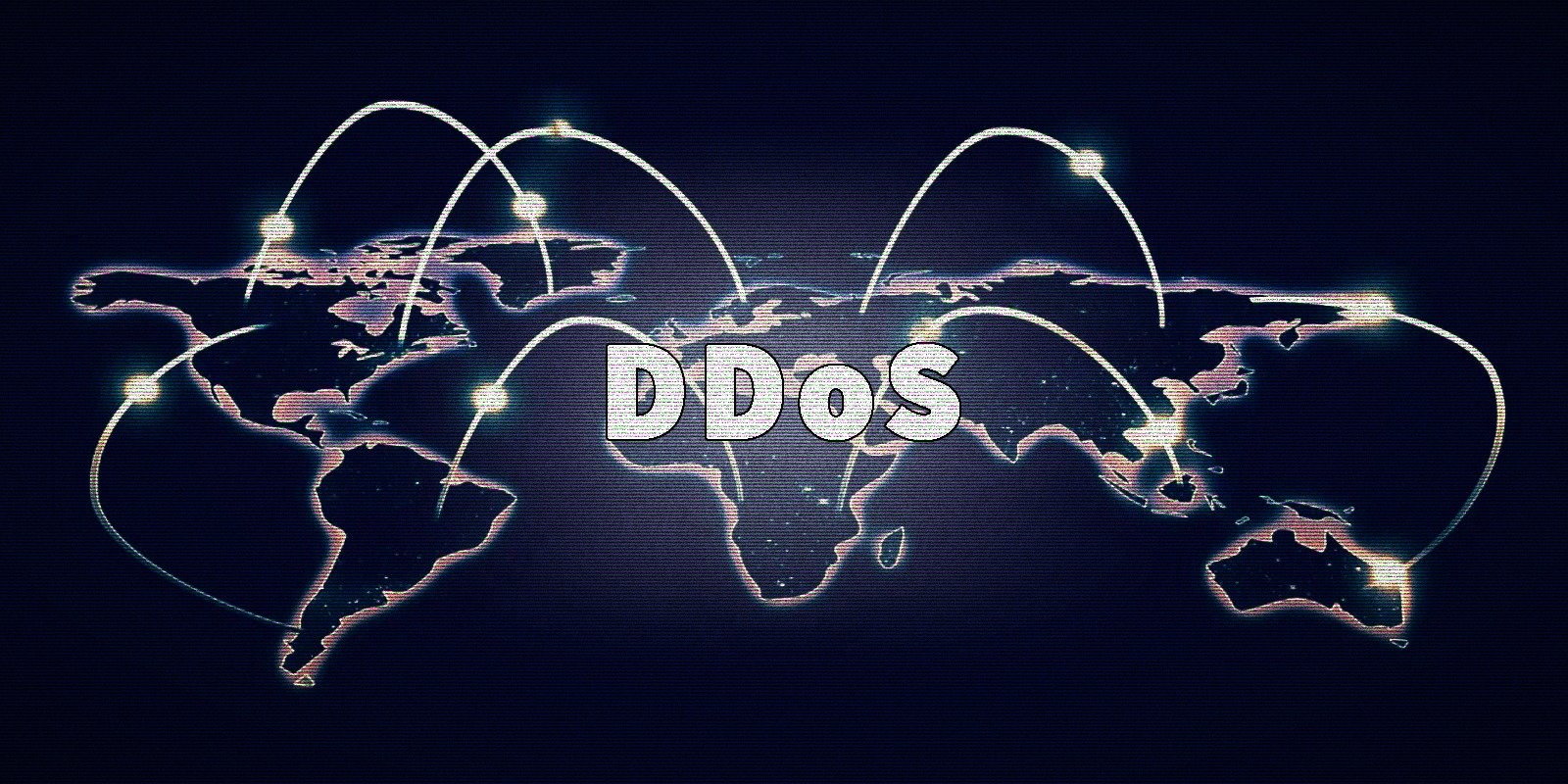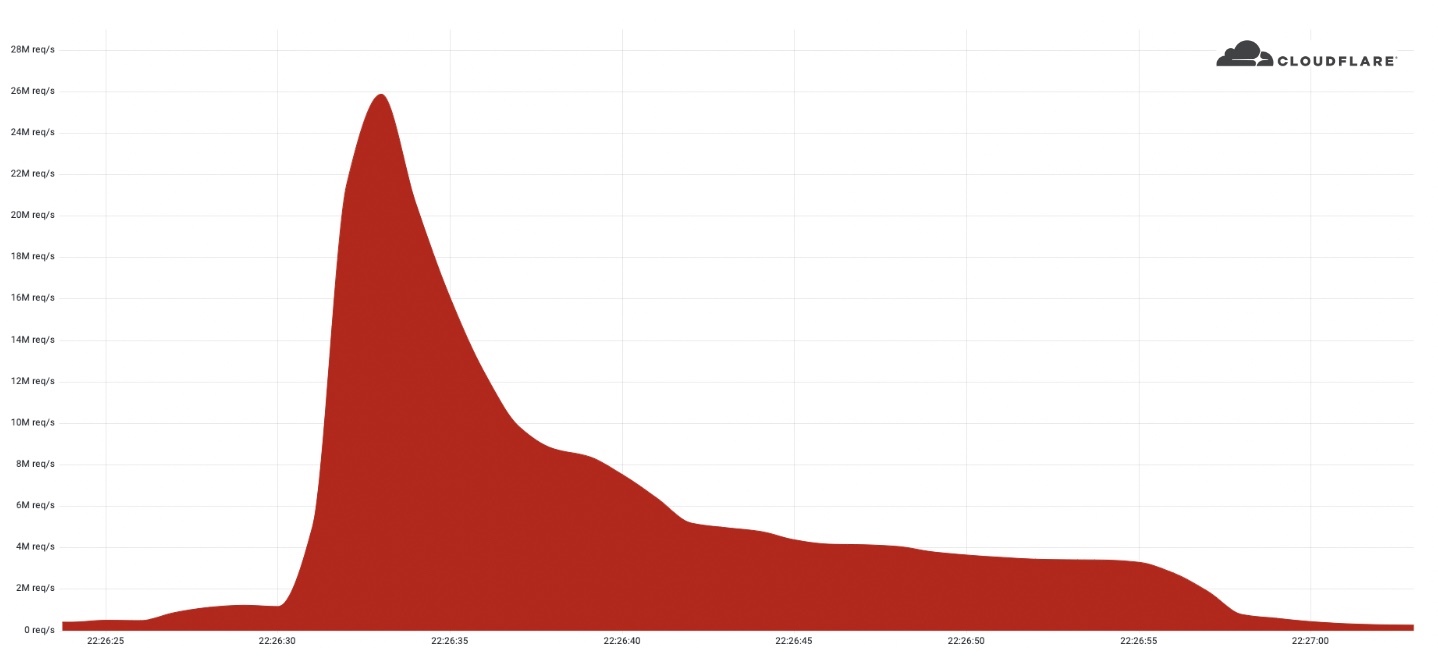
Internet infrastructure firm Cloudflare said today that it mitigated a 26 million request per second distributed denial-of-service (DDoS) attack, the largest HTTPS DDoS attack detected to date.
The record-breaking attack occurred last week and targeted one of Cloudflare's customers using the Free plan.
The threat actor behind it likely used hijacked servers and virtual machines seeing that the attack originated from Cloud Service Providers instead of weaker Internet of Things (IoT) devices from compromised Residential Internet Service Providers.
According to Cloudflare, the attacker also used a rather small yet very powerful botnet of 5,067 devices, each capable of generating roughly 5,200 rps when peaking.
"To contrast the size of this botnet, we've been tracking another much larger but less powerful botnet of over 730,000 devices," revealed Cloudflare Product Manager Omer Yoachimik.
"The latter, larger botnet wasn't able to generate more than one million requests per second, i.e., roughly 1.3 requests per second on average per device. Putting it plainly, this botnet was, on average, 4,000 times stronger due to its use of virtual machines and servers.

This is one of several massive volumetric attacks detected by Cloudflare throughout the last several years, with the company recording a short-lived HTTP DDoS attack that peaked at 17.2 million requests per second (rps) in August 2021.
The company also mitigated a 15.3 million rps attack in April 2022 that used approximately 6,000 bots to target a Cloudflare customer operating a crypto launchpad.
Also noteworthy is that the June and April attacks were volumetric attacks that used gigantic junk requests to exhaust the targeted server's resources (CPU and RAM) and were both carried out over HTTPS.
"HTTPS DDoS attacks are more expensive in terms of required computational resources because of the higher cost of establishing a secure TLS encrypted connection," Yoachimik explained.
"Therefore, it costs the attacker more to launch the attack, and for the victim to mitigate it. We've seen very large attacks in the past over (unencrypted) HTTP, but this attack stands out because of the resources it required at its scale."
The botnet used in this month's record-high 26 million rps DDoS attack generated over 212 million HTTPS requests within 30 seconds via requests from more than 1,500 networks in 121 countries worldwide.
Microsoft also disclosed that it mitigated in November another massive and record-breaking 3.47 terabits per second (Tbps) DDoS attack that flooded servers used by an Azure customer from Asia with malicious packets.


Comments
NoneRain - 1 year ago
Targeted a Free Plan customer? lol Someone is mad.
GT500 - 1 year ago
Cloudflare actually mitigated an attack of that size for someone who isn't even paying for their services? That's surprising.
kalqlate - 1 year ago
Since 2017: https://www.bleepingcomputer.com/news/technology/cloudflare-now-provides-unmetered-ddos-mitigation-without-extra-costs/
GT500 - 1 year ago
That's actually pretty cool.
Etheos - 1 year ago
Love that this was done for a free plan user. Cloudflare is the future. Its also a great time to buy shares, they are at low thanks to the wide tech crash. Buy and hold for 5 years, they are constantly innovating and becoming more and more critical to enhancing the security of web projects. They are positioned at the top layer (name servers/dns) and can work real magic in proxyjng traffic, providing edge services, databases, integrated apps, filtering ever evolving bots and other threats, detailed traffic stats, the possibilities are nearly endless for innovative add on services as the web evolves.
kalqlate - 1 year ago
Agree 1000%. Their April 2021 announcement of partnering with NVIDIA for Morpheus/DPU real-time AI-driven threat detection is a clear forward-thinking win: https://www.cloudflare.com/press-releases/2021/cloudflare-partners-with-nvidia/
https://developer.nvidia.com/morpheus-cybersecurity
https://www.nvidia.com/en-us/networking/products/data-processing-unit/
NVIDIA made an announcement about availability on April 22 of this year. I polled Cloudflare Business Support regarding any further info on their plans in this regard, but the support agent indicated that they had no further information at this time. I'm sure, though, that Cloudflare will be leading the charge here and will announce plans with Morpheus as soon as they have it integrated and ready to go. Yes, another reason to perhaps include them in your portfolio.